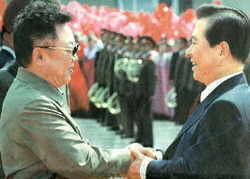History of Korea Part I

A look back at the 5,000 years of Korean history reveals triumphs and tragedies, successes and struggles -- all of which have been instrumental in shaping the Korea and Koreans of today. It is unclear as to exactly when human habitation began on the Korean Peninsula, but the Korean foundation myth dates back to 2333 B.C. when Tan-gun, a mythical half-divine, half-human being, supposedly founded the nation from which all Koreans are descended, providing Koreans with a sense of identity as one people. It seems clear that it was during the Neolithic Age (c. 5000-1000 B.C.) that the nomadic tribes from the continent who were the racial and ethnic ancestors of the modern Korean people came to the Peninsula, although these original tribes intermingled with or were assimilated by other nomadic tribes who were to arrive from the continent later, particularly during the Bronze Age (c. 1000-300 B.C.).
Countless tribal communities and alliances rose and fell until from 18 B.C. to A.D. 668, three highly centralized ancient kingdoms, Koguryo, Paekche and Shilla, emerged and flourished on the Peninsula. Shilla conquered the other two kingdoms to become the sole master of most of the Peninsula. To the north, some survivors from Koguryo established the kingdom of Parhae in 698, which lasted until the 10th century. The Unified Shilla period witnessed a brilliant civilization which achieved rapid developments in the arts, religion, commerce, education and all other fields.